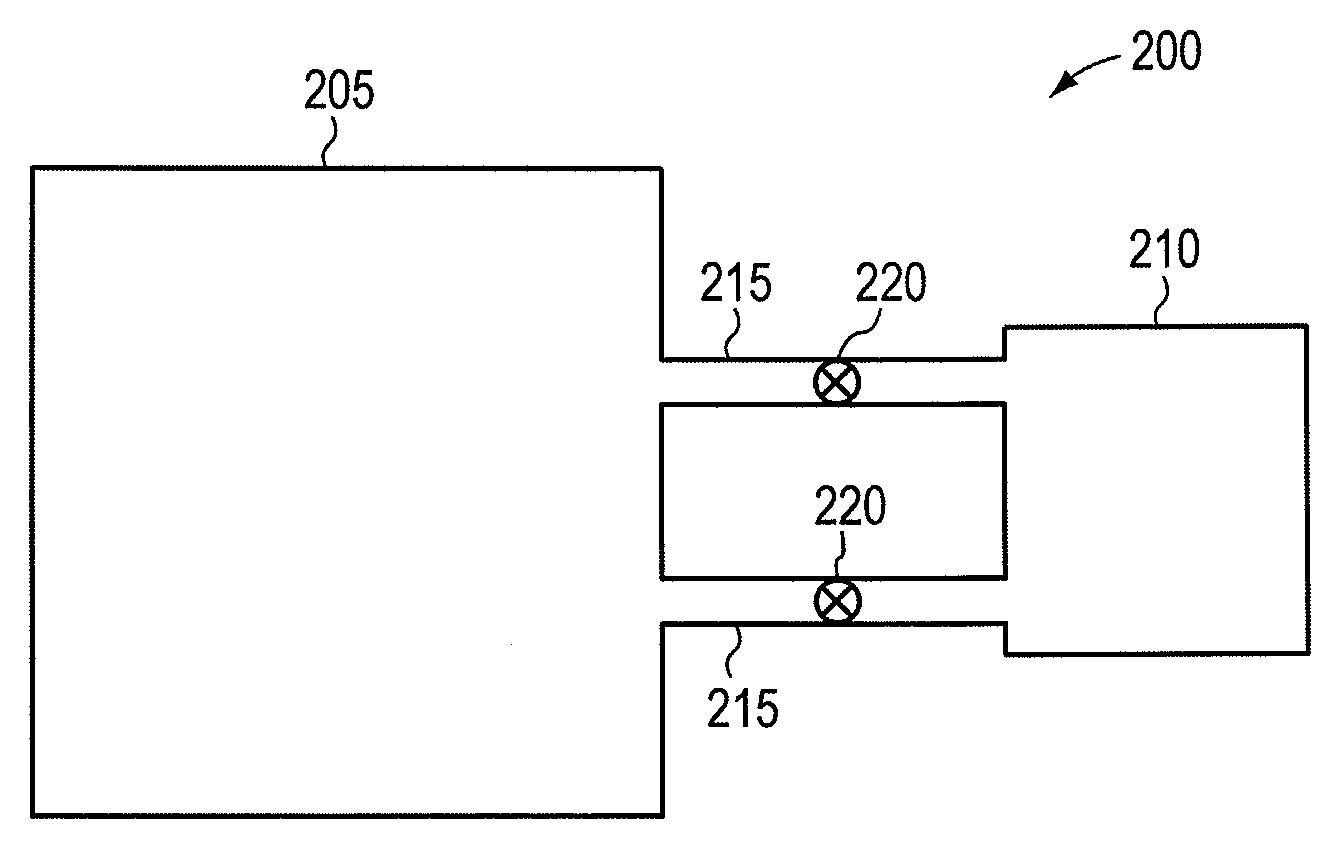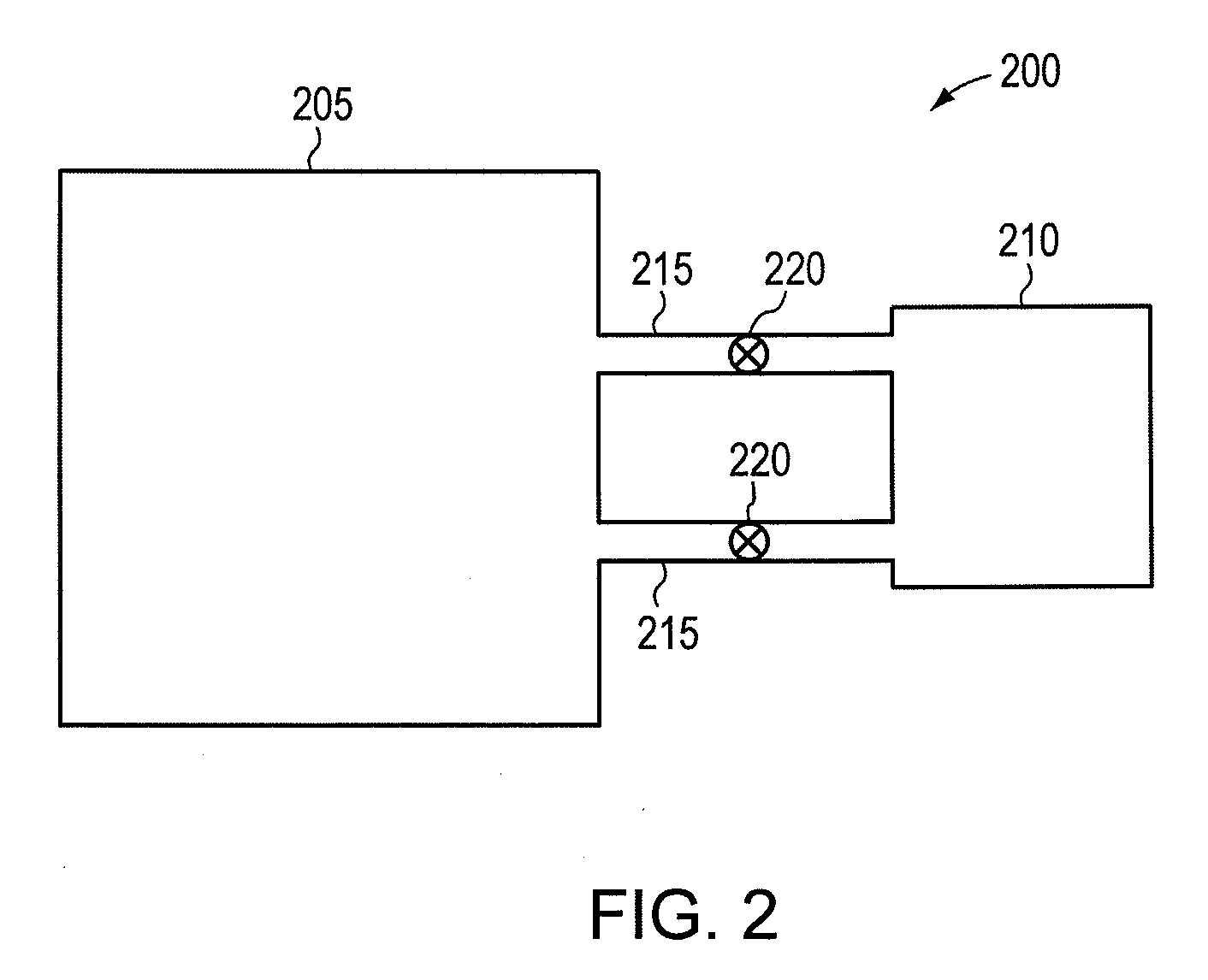Procedures for ammonia production
a technology of ammonia and production methods, applied in the field of ammonia production methods and equipment, can solve the problems of increasing the pressure as much as possible, reducing the reaction rate, and more robust and expensive reaction vessels and associated equipmen
- Summary
- Abstract
- Description
- Claims
- Application Information
AI Technical Summary
Benefits of technology
Problems solved by technology
Method used
Image
Examples
first embodiment
[0020]In one aspect, this invention relates to the use of metal nitrides to catalyze the preparation of ammonia from hydrogen and nitrogen. There is currently a wide range of interest in lithium nitride, Li3N, as a hydrogen storage material. This is because lithium nitride reacts reversibly with hydrogen at 250° C., according to Eq. 2.
Li3N(s)+2H2(g)⇄2LiH(s)+LiNH2(s) Eq. 2
[0021]The adsorbed hydrogen can be released by heating, but it desorbs along with a small amount of ammonia, which tends to poison catalysts in fuel cells.
[0022]The iron catalyst described above assists in breaking the H—H bond, allowing dissociated hydrogen to react with the much more inert N2 molecule. This is why relatively high temperatures are still needed for the production of ammonia. While high total pressures are a thermodynamic requirement of the process, a catalyst that is able to activate both N2 and H2 should allow the reaction to occur at significantly lower temperatures, with significant economic ben...
second embodiment
[0026]In another aspect, this invention relates to the use of a supercritical fluid, and in particular supercritical ammonia, as a reaction medium for the preparation of ammonia from hydrogen and nitrogen. Over the past decade, supercritical fluids have developed from laboratory curiosities to occupy an important role in synthetic chemistry and industry. Supercritical fluids combine the most desirable properties of a liquid with those of a gas: these properties include the ability to dissolve solids and total miscibility of the supercritical fluid with permanent gases. For example, supercritical carbon dioxide has found a wide range of applications in homogeneous and heterogeneous catalysis, including such processes as hydrogenation, hydroformylation, olefin metathesis and Fischer-Tropsch synthesis. Supercritical water has also found wide utility in enhancing organic reactions.
[0027]Supercritical fluids (SCFs) exist above the critical pressure and critical temperature of a material,...
PUM
 Login to View More
Login to View More Abstract
Description
Claims
Application Information
 Login to View More
Login to View More - R&D
- Intellectual Property
- Life Sciences
- Materials
- Tech Scout
- Unparalleled Data Quality
- Higher Quality Content
- 60% Fewer Hallucinations
Browse by: Latest US Patents, China's latest patents, Technical Efficacy Thesaurus, Application Domain, Technology Topic, Popular Technical Reports.
© 2025 PatSnap. All rights reserved.Legal|Privacy policy|Modern Slavery Act Transparency Statement|Sitemap|About US| Contact US: help@patsnap.com



